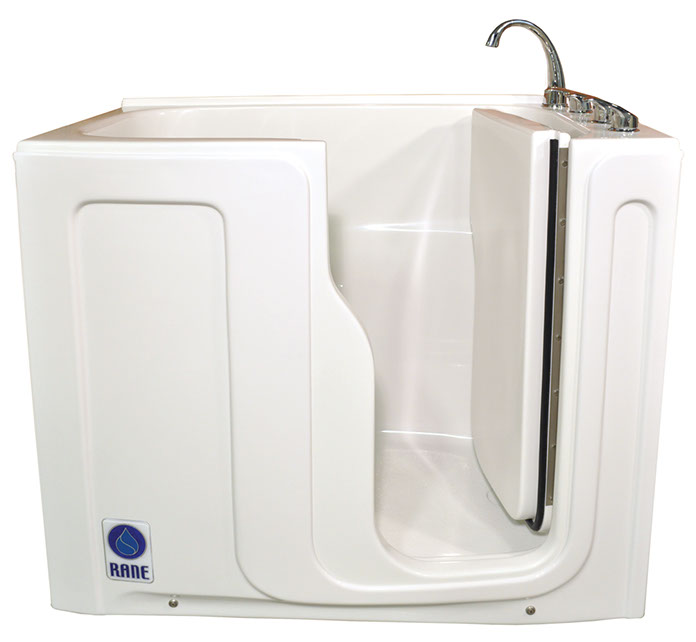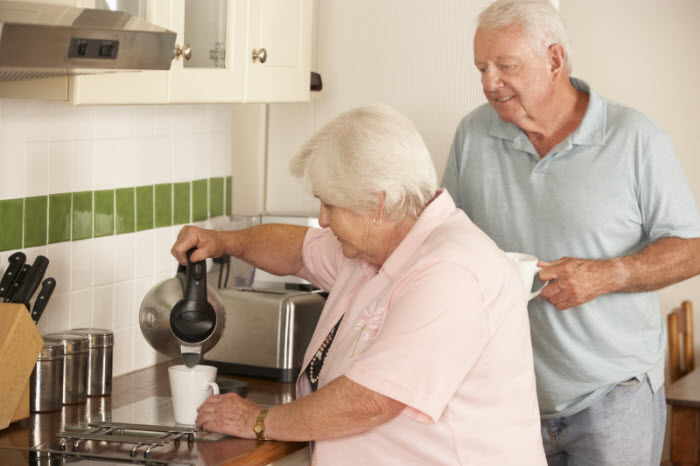Home Modifications for Aging in Place
Posted on by Chris Frombach
![]() 2014 saw the largest number of elderly – 44.7 million – ever in the United States. This number represented 14.1% of the entire US population (www.aoa.acl.gov) and is expected to increase by ⅓ by 2040. And, like most who are in this age category, with advancing age comes the realization that living like we did in our younger years may be more challenging than we would like.
2014 saw the largest number of elderly – 44.7 million – ever in the United States. This number represented 14.1% of the entire US population (www.aoa.acl.gov) and is expected to increase by ⅓ by 2040. And, like most who are in this age category, with advancing age comes the realization that living like we did in our younger years may be more challenging than we would like.
Home modifications for elderly individuals can help make their current living environment safer and more functional. These changes can be rather simple, and will allow you or a loved one to maintain a certain level of independent living. The below modifications can help make aging in place easier for individuals who wish to stay living in their current home.
Making Stairs Manageable
If you have a two-story home, the stairs can become an aging in place hazard. They can also create pain if you suffer from ailments in your feet, legs, hips or back.
Stair lifts are becoming a very common aging in place modification in homes of people who don’t want to move, but need help using the stairs. Stair lifts are powered to safely move you from either the top or the bottom of your stairs on a track. All you must do is sit in the chair and push the button that puts the lift in motion.
An alternative option to the stair lift is an elevator system that carries you between the levels of your home. This option keeps you independent in your living environment. There are different models, just like the stair lift, to fit your budget and style preferences.
Ramps for Easier Access
A simple solution to making room transitions safer is to add ramps to areas with stairs or difficult thresholds, especially if you use a wheelchair.
Threshold ramps are made of rubber and very durable. If you feel you aren’t ready for a ramp, you may want to install traction tape to avoid slips. Furthermore, you can investigate buying portable ramps that you can use anywhere in your home.
Steps outside your home can be covered by a ramp also, making it easier for you to get to your car or to spend time outside in your yard. Ramps are inexpensive and can be built by a local contractor.
Bathroom Safety Modifications
 Up to 80% of falls happen in the bathroom. Why? Small footprint, potentially slippery conditions, and the need to move in many planes (e.g., over a tub, up and down off of the toilet).
Up to 80% of falls happen in the bathroom. Why? Small footprint, potentially slippery conditions, and the need to move in many planes (e.g., over a tub, up and down off of the toilet).
Easy bathroom modifications include placement of a rubber-backed mat outside of the tub, a non-slip mat inside the tub, or installing bulbs with more lumens. More advanced modifications can include:
- Removal of a vanity in favor of an open based sink
- Replacement of a bathtub with a roll-in shower or barrier free tub
- Adding grab bars, anti-slip strips or other accessories that make it safer to move about the room safely
- Use of a bathtub transfer bench or bathtub chair
- Installation of an overhead lift for help getting in and out of the bathtub
Additional modifications include raised toilet seats, handheld sprayers and nozzles, LED nightlights, inflatable basins, portable bidets, back scrubbers and toilet tissue aids.
Living Room Safety Modifications
The living room could be the most “lived in” room in the house so mobility solutions can help this room be more comfortable. Modifications here may include:
- Removal of any throw rugs that may cause tripping
- Making sure that there are no humps in wall to wall carpet
- Ensuring that the furniture is at a good height for ease of sitting and standing
Other modifications include making sure that there is adequate lighting, minimizing or eliminating extension cords and control systems for home automation (www.crestron.com).
Kitchen Safety Modifications
When you were younger, you picked out the counters, the cabinets, refrigerator, and sink based on style, what was popular, your finances, and perks available at the time.
But now that the future is here, it’s time to make modifications that allow you to continue using the kitchen you love. Kitchen modifications for the elderly and individuals with disabilities can increase safety, accessibility, and independence.
The key is to make everything more accessible, so you aren’t risking safety by trying to reach something too high up.

Watch out for slippery floors here as well. Easy modifications include moving more frequently utilized items within easy reach as well as purchasing items such as OXO Good Grips products that make the preparation of foods less taxing on joints (www.oxo.com). More advanced modifications can include lowering the counter height, pop up shelves in cabinets and auto-sensing faucets that eliminate the need to turn the water on and off.
Bedroom Safety Modifications
It’s where we all retire to at the end of a long day, but it can be potentially hazardous without the right modifications.
- Ensure that the height of the bed is appropriate for ease of entry and egress
- Place frequently used clothing in drawers at hip height to minimize bending
- If you have a larger closet, consider removing items from bureaus and placing them in closet storage organizers that are open and easy to see and retrieve
While the effects of aging are something that we all will have to consider at some point, it doesn’t have to be daunting. With the right planning and preparation, you can safely live in your home for many years to come!
Interested in a free home assessment to ensure every room in your house is safe and accessible? One of our trusted and expert consultants are happy to assist. Contact us today!
